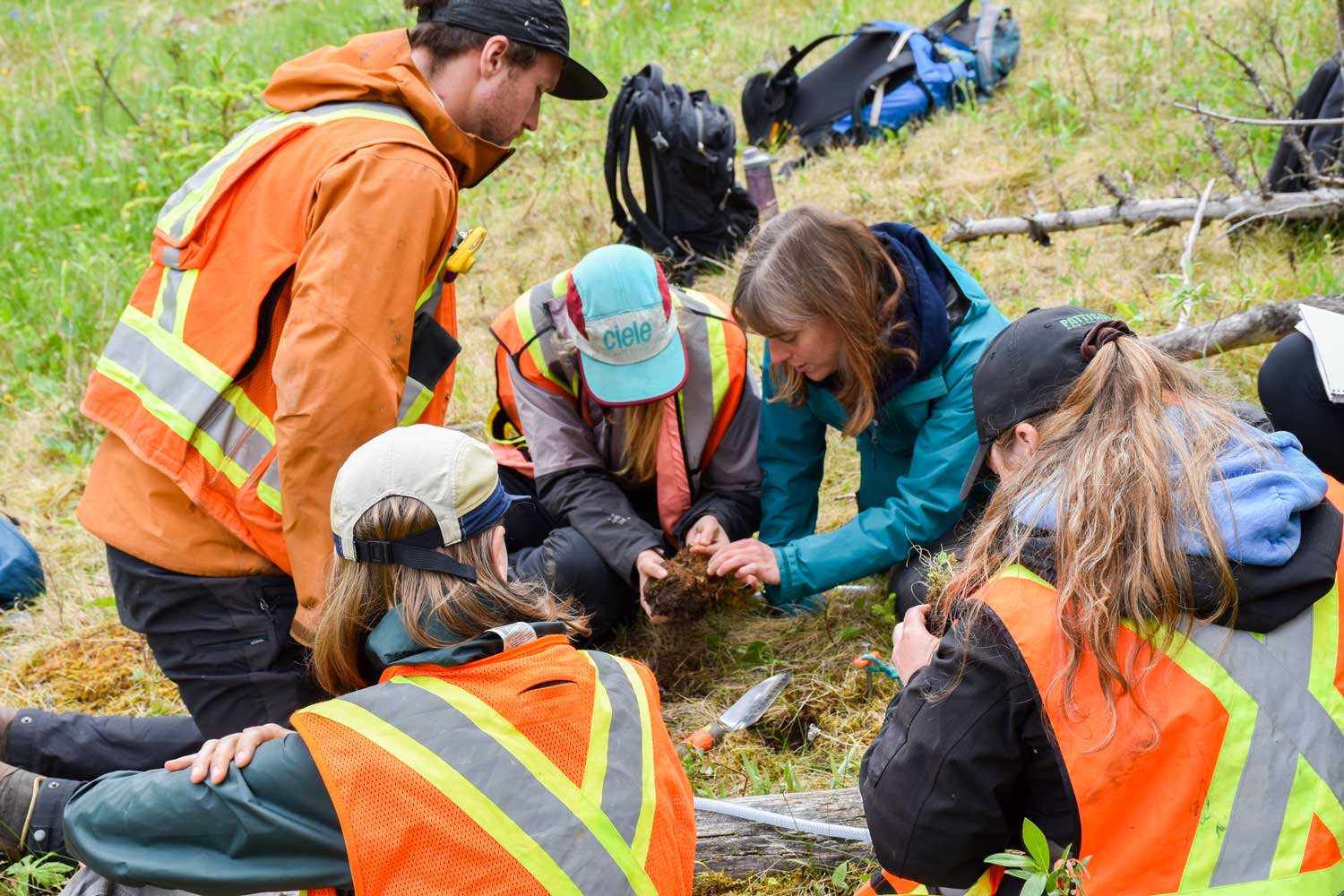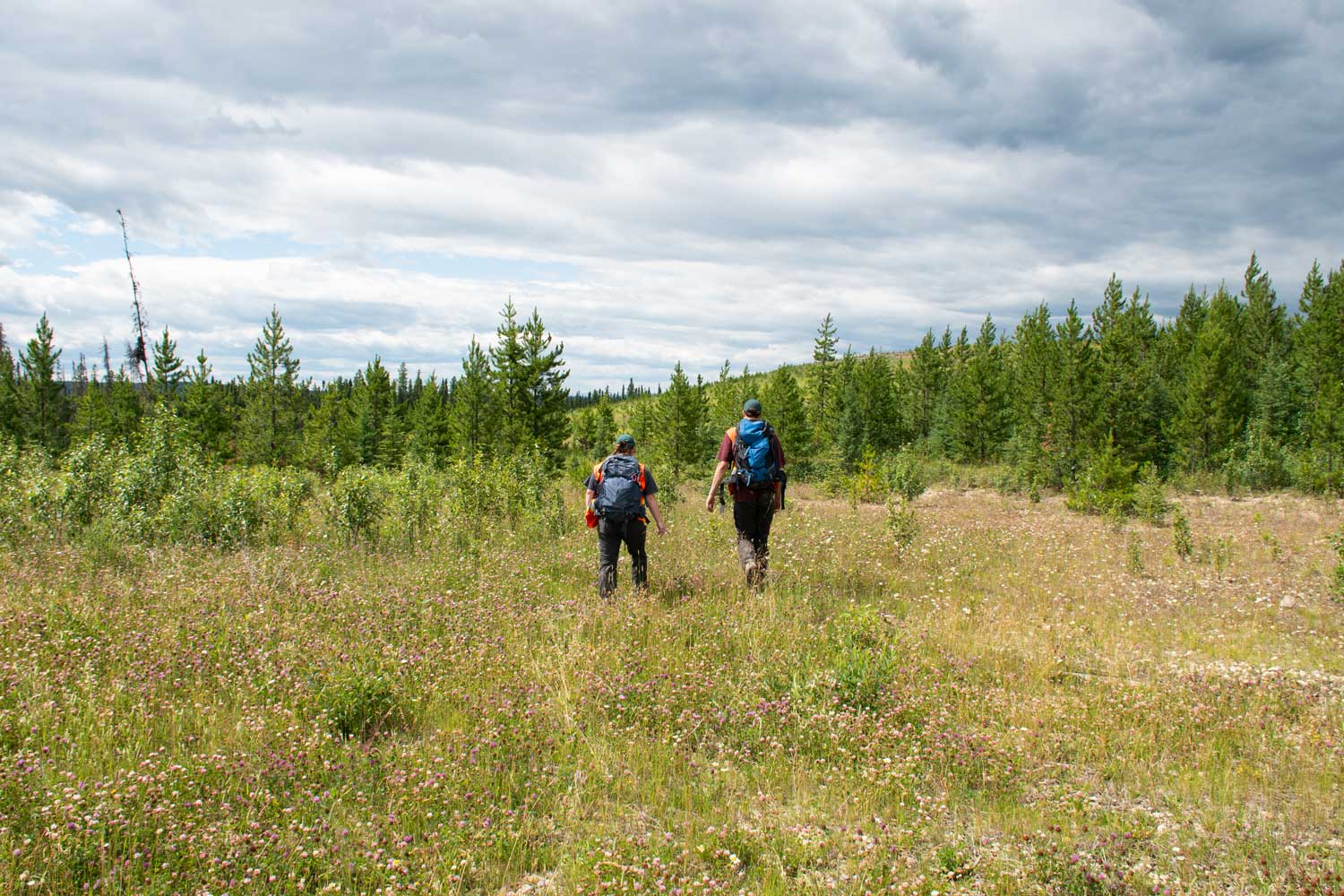
By Ben Williamson
The mood is relaxed in the field office as the caribou crew prepares for day nine of their shift. Hailey, James, Kris, and Nicola work through gear checklists, Solène divvies up the day’s sites, Courtney updates the GPS devices, we take a head count for who is coming for pizza tonight. Throughout, our Chief Solutions Officer Leonie Brown quietly pops in and out with a replacement for someone’s expired bear spray, a work-around to a tablet glitch – whatever is needed.

Hailey shows off a wasp sting she got on her arm. “It flew up my sleeve while I was driving the truck!”
“Whenever I step through a rotten log,” says James, “I think ‘is this the day I set off a nest of them?’”
“I did that just a few days ago,” says Kris, “But it was just like thousands of red ants.”
The shift started the day after the Jasper wildfire evacuations. Unhealthy levels of smoke had kept the team office-bound at first – organizing, repairing, and testing gear, including some new climate sensors called TOMSTs. Then rain and cooler temperatures arrived, reducing fire activity and smoke, and we resumed normal operations servicing camera trap sites and doing a 10-year re-survey of vegetation on linear features.
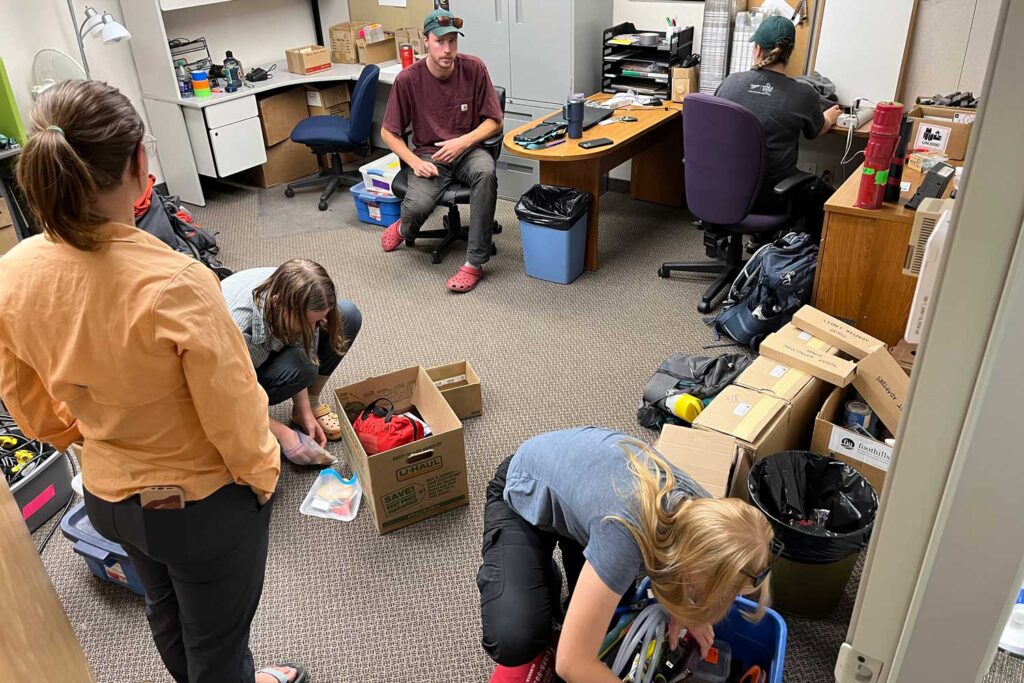
Nicola runs through the day’s expected hazards. Wildfire risk has been downgraded in our forest area, and the smoke forecast is better, so most of the items on the list are things such as other drivers, sharp tools, allergies, overhead hazards like falling trees, and wildlife. Finally, we’re ready to go. I’m with Kris and James today. As we load gear into the trucks, Hailey walks past with a popsicle stick in her mouth.
“Fudgesicles in the morning?” asks Kris.
Without missing a beat, Hailey shoots back, “first one of the day hits the hardest.”
It’s James’ turn to drive while Kris navigates and makes the radio call-outs. We cross the Athabasca River and start up the north side of the valley through a warren of logging roads.
“Empty pickup, kilometer 16 on the A-Road.”
“Do you ever do an accent on the call-outs?”
“I think about it but I’m not really good at accents,” she says. “Plus, there’s a real British guy out here that we hear a lot.”
Every truck kicks up a plume of dust, shot through with slanting rays of sunlight. It’s a nice day.
“I didn’t really notice how bad the smoke got until it cleared up again,” says James, and the conversation pauses for a minute, the fire still smouldering in people’s minds.
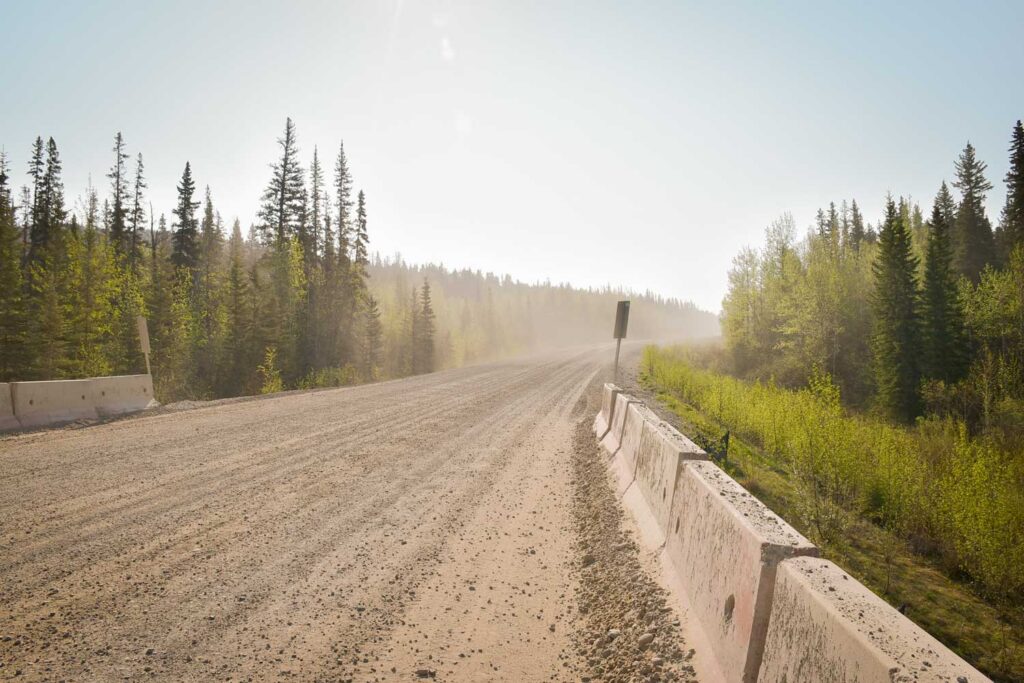
“Empty pickup, kilometer 22, A-Road.”
“How did you handle the heat wave a few weeks back?”
“Swimming every day. We were based at Pierre Grey’s Lakes then,” says James.
“It has a great dock for jumping off,” adds Kris.
Today we’re taking down three camera trap sites. These went up the previous year for the ungulate density project. The goal is to estimate populations of deer, elk, and moose just using a grid of trail cameras in the forest. Since this is a relatively new method, especially for this region, we are testing several study designs simultaneously to try to figure out the most efficient way, so it can replace helicopter surveys.
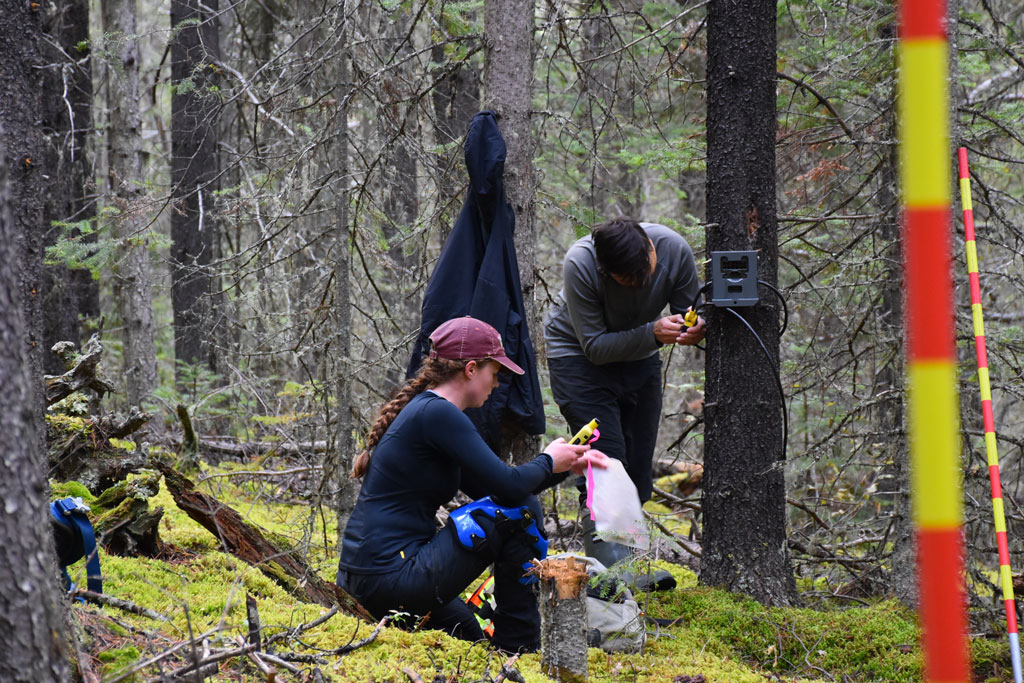
Earlier in the week, the crew worked through the last veg surveys in the Hinton area. Those were long days that felt longer because the sites don’t have as much variety as the camera ones.
“All the linear features kind of blend together,” explains James. “It’s usually the same plants 100m down a pipeline from a road. But these camera sites can have anything. I like when you’re moving a lot and seeing different things and having to navigate the forest.”
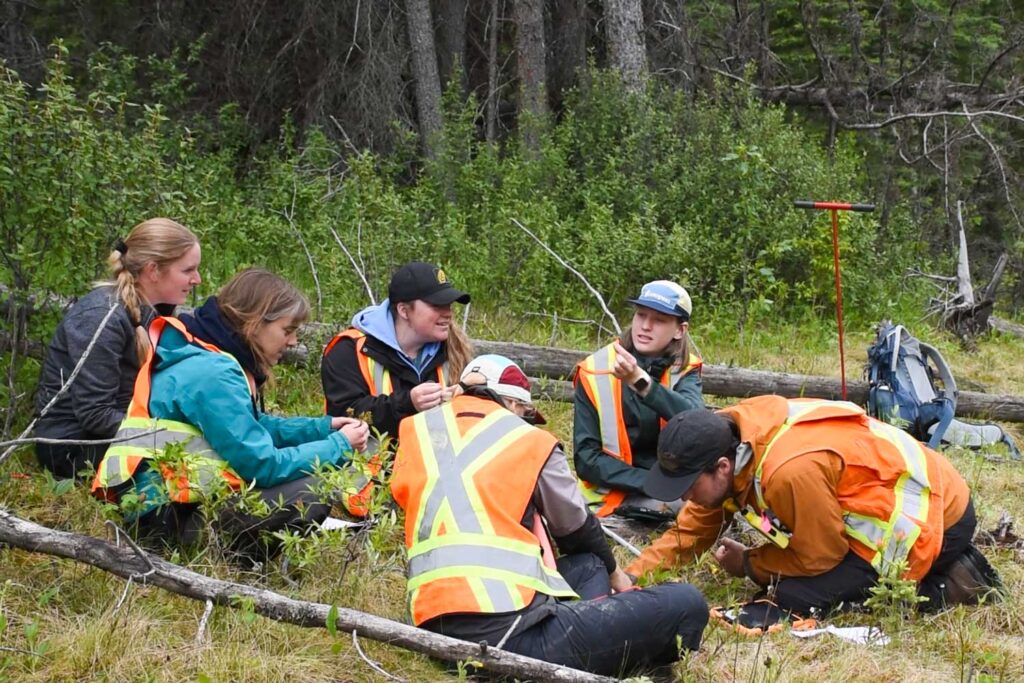
When we park and set off on foot for our first site, this becomes immediately obvious. James is keeping our compass bearing through an old lodgepole pine stand full of fallen trees, and it’s clear that he’s not picking the easiest path. He balances on logs and strides over obstacles and doesn’t seem to mind finding his way through jackpots.
It’s a still, shady forest, moss-muffled, lichen draping nearly every tree branch. Red berries pop against the background of greens. Every few minutes one of us stoops to pick a cluster of dwarf raspberry, each one tiny but exploding with sweet juice.

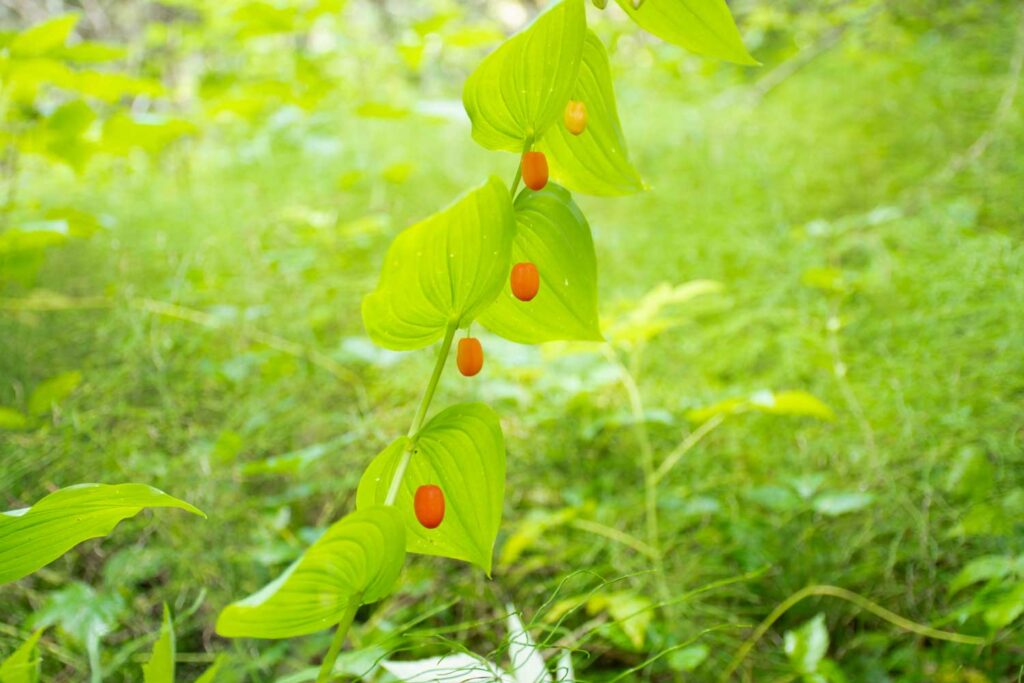
We come to a ridge and find a way to clamber down the steep muddy slope to a river. In the mud, there are dozens of overlapping prints from moose, deer, and many smaller animals.
Pretty soon, we catch a glimpse of the red and yellow poles of site 116. Without the need for discussion, Kris and James slip their packs off, record the site’s final measurements, and repack all the gear. In under five minutes, the only sign that people have been here are tiny screw holes in the tree that held up the camera, and a few trimmed branches so it had a clear 10-metre view.
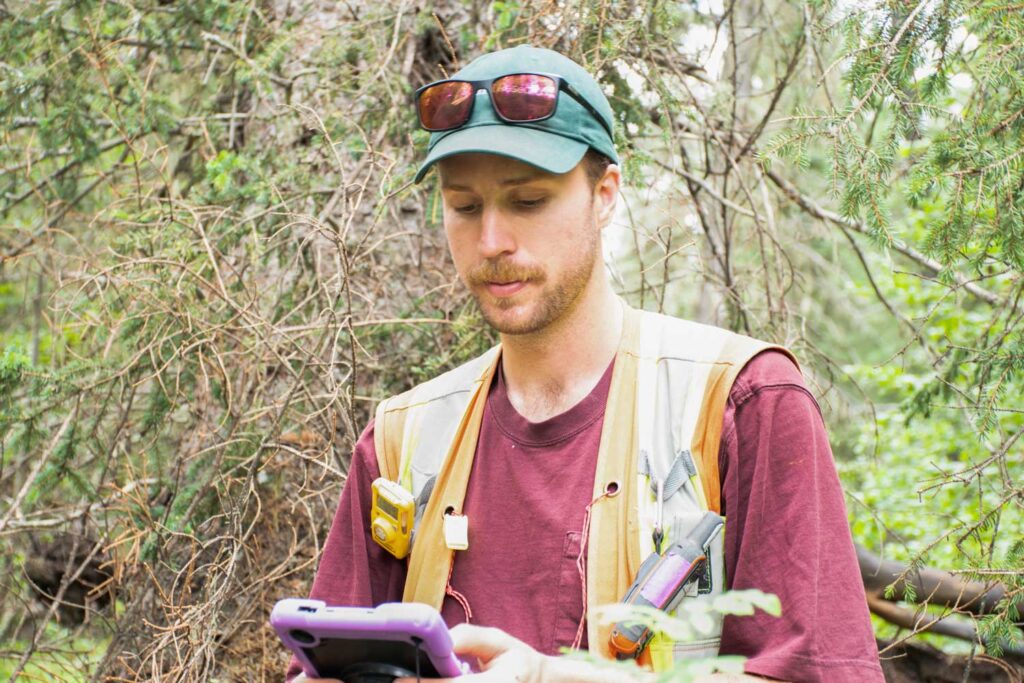
We look for an easier way back up the ridge, but in the end we can’t do better than our route in and we are soon sweating as we haul ourselves up, boots sliding in deep mud. We hit a huge jackpot on the way back, but James, who already declared, “the moss is lava,” and has been walking on top of deadfall much of the way back, just passes over it.
“I thought you were just having fun, but that might have been the easier way.”
He grins, “it’s nice when they’re the same.”
Back in the truck, Bon Jovi comes up on the playlist.
“Is this the hardware store mix?”
Kris laughs, “Caitlin on the grizzly bear crew says I have uncle vibes. I think it’s because one night at the start of the season, I was just sittin’ in my lawn chair, watchin’ traffic and enjoyin’ a beer. And it stuck. So now I’m trying to find the perfect uncle song for the next karaoke night.”
Our second site today is a short drive and a shorter hike. This time it’s in a young spruce and pine stand. These are usually dense, tough bushwhacks, and this one is no exception. James and Kris blindly search around for the brightly coloured poles, unable to see more than a metre in front of them.
Finally, James pops out in a tiny clearing, just barely big enough for the protocol.
“Found it!”

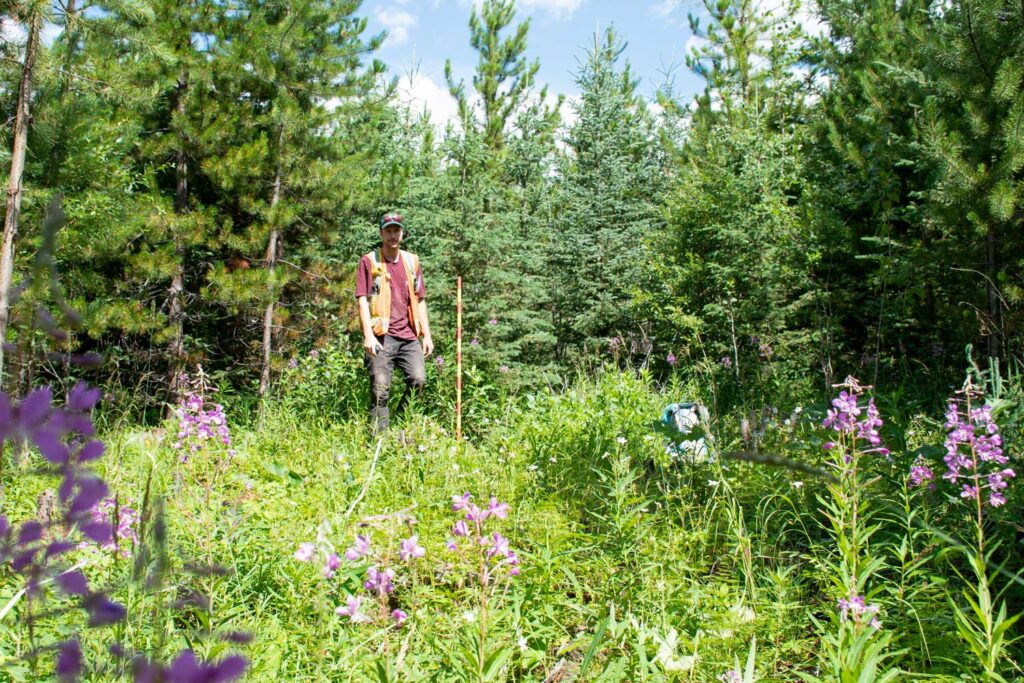
The two yell “Marco” and “Polo” until Kris arrives. This time one of the red and yellow poles is lying on the ground. Kris is immediately invested in what happened. As she copies the camera photos onto the tablet, she scrolls back a few weeks.
“Well this tells a story,” Kris says.
On June 19, a black bear ambles up, sniffing and rubbing on the pole, leaving it leaning halfway over. Then, on June 24, what looks like the same bear comes back to finish the job.

“I think it’s usually the bears who mess with these metal poles,” says James. “But it seems like moose like to nibble on the wooden snow stakes.”
We discover that the ditch where we parked is lined with wild strawberries. We stop for a few minutes of additional “data collection.” They’re all the more addictive, being too small to ever get enough of.

Our final site of the shift takes us on a long hot walk through a new harvest block. It’s a riot of colour, covered in flowers and berry bushes but also strewn with slash, little mounds and holes, and other trip-ups.




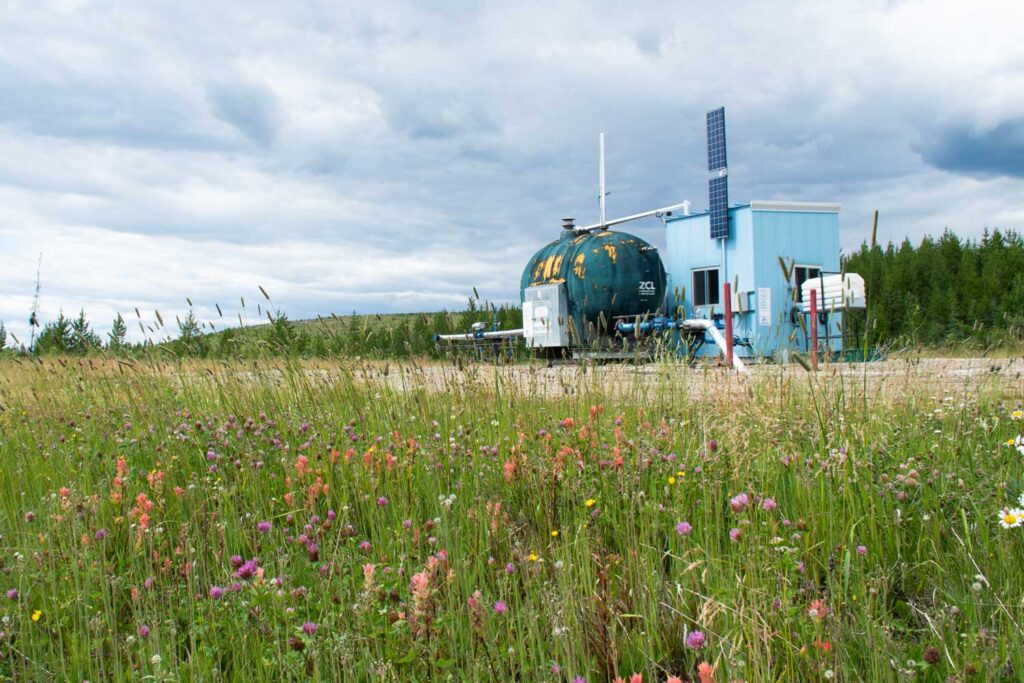

After a little under a kilometre, we plunge into an open black spruce forest. Bright red mushrooms nestle in the feather moss.

When we leave the shade and walk back, we each pick our own way through the harvest block. Kris finds a toad, and there is some debate about the ID of a wildflower, but mostly we are alone with our thoughts. A member of the team lost her home in the wildfire and tonight’s pizza shindig is meant to surround her and her partner with friendship. It’s been a heavier shift than usual.
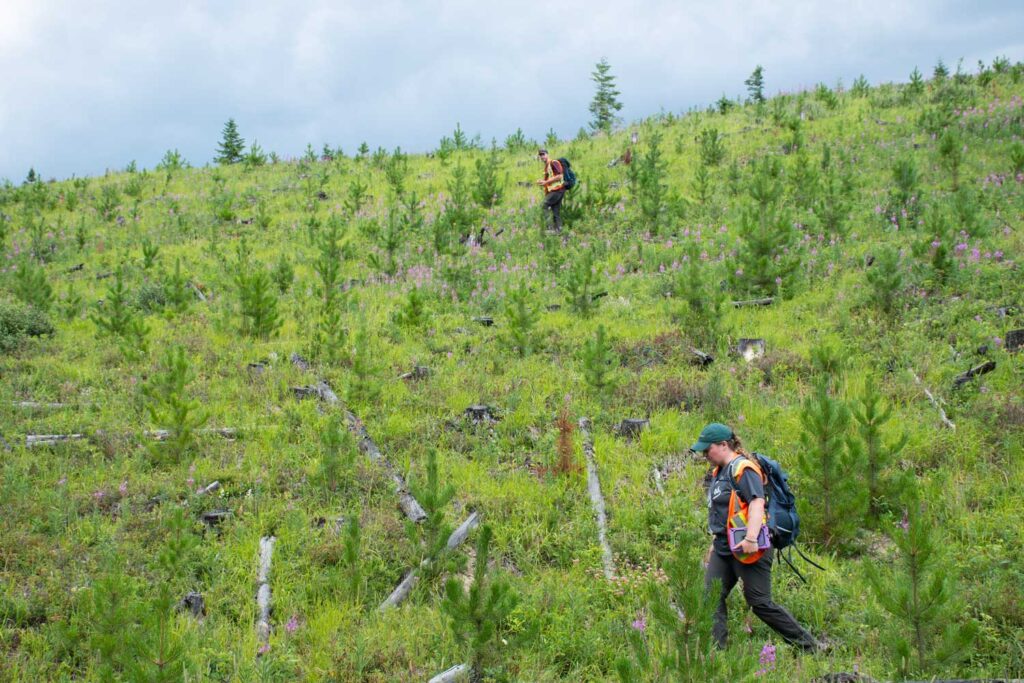
When we get in the truck, we’re still a bit quieter, and Kris turns up the tunes. Instead of “uncle” songs, now it’s her preferred country music. Waylon Jennings and Hank Williams Jr. blend with the crackling radio as we drive the rolling gravel roads back to Hinton.
“Loaded pickup, 17 on Eccles Road.”
Within about 20 minutes, the energy picks back up. Kris and James kid each other about bad directions, and we talk about what we’re planning for our days off. After the crew unpacks at the office, we split up for a few hours, and a short rain shower takes the heat out of the day.
When we meet up again, it’s at a backyard looking out over the hills south of town. Hailey brings a homemade game of washer toss. Her team wins match after match. We put on a chaotic playlist made up of one song suggestion from each person, and the music and laughter and clink of washers fill the air. When the long summer evening gradually dims, people start to say goodnight and goodbye – until next shift.







